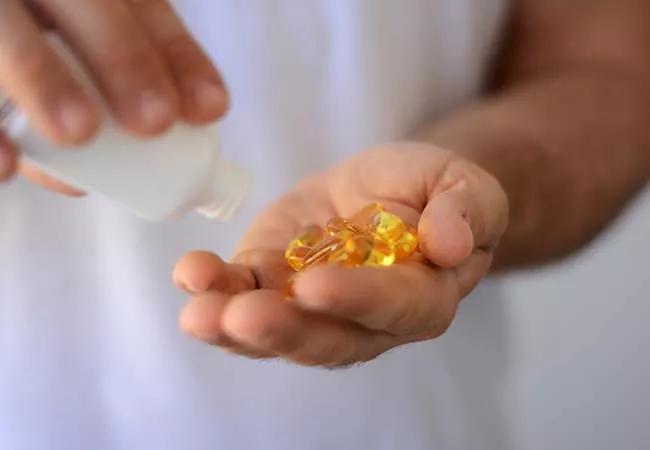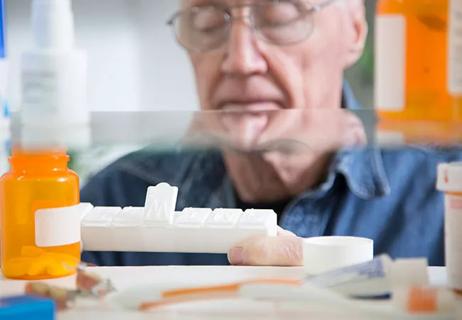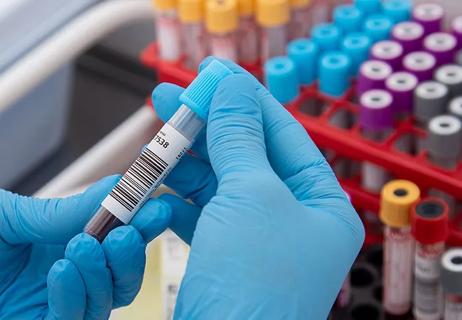Advertisement
Guidance for counseling patients on the use of one of the most common daily supplements taken in the US

By Susan E. Williams, MS, RD, MD, CCD, FACE, FAND
Advertisement
Cleveland Clinic is a non-profit academic medical center. Advertising on our site helps support our mission. We do not endorse non-Cleveland Clinic products or services. Policy
This is part one of a two-part article reprinted (without references) from the Cleveland Clinic Journal of Medicine (2022;89[3]:154-160). The open-access and fully referenced original article is available at https://www.ccjm.org/content/89/3/154#abstract-1. The second part is available here.
Vitamin D supplementation is ubiquitous in the United States, and 20% of all adults take a dietary supplement containing vitamin D. Supplement use is highest in the very young and in people age 60 and older. Observations of the detrimental effects of inadequate sun exposure date back centuries. In 1650, scientists noted that children who lived in polluted and crowded cities in Northern Europe developed debilitating skeletal abnormalities, including bowed legs. In the 1890s, epidemiologic studies in Great Britain noted the higher incidence of significant skeletal abnormalities in children in industrialized cities compared with those who lived in rural areas of the British highlands. In the United States, it took until the 1920s to achieve wide acceptance that routinely exposing children to sunshine could prevent debilitating skeletal abnormalities.
During the 18th and 19th centuries, cod-liver oil was commonly used to prevent and treat skeletal abnormalities in children. The antirachitic factor of cod-liver oil was later isolated and became known as vitamin D. Investigations early in the 20th century led to the vitamin D fortification of milk and infant formulas that became common practice by the 1930s. As a result, rickets, once the most common disease in children, was eradicated in the United States 100 years ago.
Eradication of rickets was a giant step forward in skeletal health of youngsters. However, fortifying foods and beverages with enough vitamin D to prevent rickets but avoid hypercalcemia did not eliminate vitamin D deficiency.
Vitamin D deficiency is common in the United States and around the globe. The most common cause of deficiency is insufficient intake (oral or dermal). In a study using National Health and Nutrition Examination Survey (NHANES) data from 2011 to 2014, almost 20% of the US population had serum 25-hydroxyvitamin D (25[OH]D) values categorized as “at risk for inadequacy” (defined as 30 to 49 nmol/L or 12 to 19 ng/mL), and 5% were categorized as “at risk for deficiency” (< 30 nmol/L or 12 ng/mL). These reference ranges may be lower than what most clinicians consider to be deficient. For example, numerous studies have found a recommended threshold of 50 nmol/L (20 ng/mL) for bone health to be insufficient for fall or fracture risk reduction.
Vitamin D supplementation to prevent and treat immune-related diseases including COVID-19 was reviewed by Charoenngam et al. In an extensive examination of the immunologic effects of vitamin D supplements, the authors described the immunomodulatory hormonal effects of vitamin D, noted significant biologic effects on the innate and adaptive immune systems, cited the immunomodulatory and antiviral effects of the active form of vitamin D (1,25 dihydroxyvitamin D), and suggested that vitamin D supplementation might reduce the risk and severity of COVID-19 infection. They concluded that although the optimal level of vitamin D remains unclear, maintaining a serum 25(OH)D level of 100 to 150 nmol/L (40 to 60 ng/mL) is recommended.
Advertisement
As reported at an American Academy of Dermatology conference in 2005, repeated exposure to ultraviolet (UV) light activates both the innate and adaptive arms of the immune system, and UV light from solar radiation has dose-dependent effects on cells, with cellular and DNA damage that can cause immunosuppression.
The guidelines identify minimum requirements to maximize bone health and muscle function. However, achieving blood levels above 30 ng/mL (which is considered below normal or low-normal in most laboratory reference ranges) may require more than 2,000 IU daily. Patients with obesity may require several times that dose to attain and maintain a normal level. The Endocrine Society guidelines, in addressing the issue of assay variability, note that in the clinical setting, achieving a level of 40 ng/mL will not result in toxicity but will ensure that an individual’s true value is greater than 30 ng/mL.
Investigators have considered whether a predictive equation could help clinicians select the correct replacement dose of vitamin D for their patients. Singh et al addressed this question with a retrospective observational study. After reviewing the response to vitamin D supplementation in more than 1,300 ambulatory and nursing home patients and employing multiple regression analyses, they published a series of equations that predict the dose of vitamin D needed to achieve a given change in the serum concentration of 25(OH)D in these patient populations.
Singh et al speculated that lack of sun exposure explained the need for higher doses of vitamin D in nursing home patients, since their analyses concluded that increased age alone was not a negative factor in response to vitamin D treatment. Their analyses did not address the duration of treatment, but Singh et al acknowledged that many patients require long-term maintenance therapy. They further observed that 5,000 IU per day is usually needed to correct deficiency, and a typical maintenance dose should be at least 2,000 IU daily.
Vitamin D dietary supplements are widely available, and in 2020, the industry’s estimated market value exceeded $1.1 billion, projected to reach close to $1.6 billion by 2025. The annual growth rate is more than 7% due to people paying more attention to their nutrition and their health in general.
The popularity of vitamin D supplements has been fueled at least in part by campaigns educating the public about the risks of skin cancer due to excess sun exposure, the association of vitamin D deficiency with many chronic diseases and the association of vitamin D levels with optimal immune function.
Advertisement
Vitamin D supplements are available by prescription, over-the-counter, and online. In 2021, the cost per 100 tablets of 2,000 IU vitamin D3 was around $0.05 per tablet, while 100 capsules of 50,000 IU vitamin D2 or D3 started at $0.25 per capsule.
Advertisement
Advertisement

Falling from standing height should not break bones

Comprehensive approach can make a transformative impact

Screening and medication key to better outcomes

While the skeletal effects of nutrient deficiency are well-known, it’s important to consider how deficiency impacts the endocrine system

The tool can provide better clarity on evaluation of indeterminate thyroid nodules, reduce the number of unnecessary surgeries and help providers tailor patient care

Two case studies illustrate why it’s important to look at DXA data holistically when treating patients with fracture risk

Because treatment options are reserved for classic Cushing’s, monitoring changes is critical in the management of subclinical Cushing’s

Although the diagnosis and treatment processes are often straightforward, it’s important to be timely with initiating both